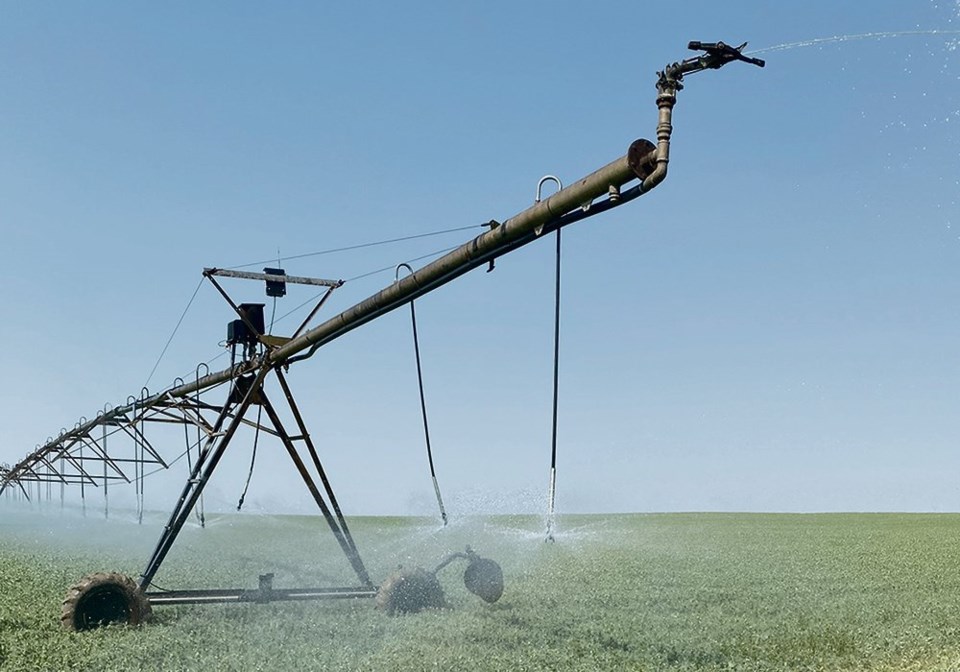Four distinguished CAPI fellows listed their priorities for the next federal agriculture minister during a post-election online discussion.
Ted Bilyea, well-known for his long career at Maple Leaf Foods, said the world needs what Canada has an abundance of: food, energy and minerals.
“My concern is that we have a lot of cards, and probably a winning hand strategically, but I’m not sure we know exactly how to play those cards very well,” he said during the webinar.
Bilyea said Canada has been able to command premiums in some meat markets due to high animal health standards and in grain markets because of low residue levels.
Now climate change is playing a role, he said, as countries have to meet certain climate commitments.
“We can see already in the many reports that have been done on the (European Union) strategy that that’s going to cut their production and somewhat significantly,” said Bilyea. “The same thing is happening already in China.”
He said soybean shipments to China last month were much lower than expected.
“Part of that is not just the fact that the Chinese hog industry is going through another problem, but because there’s not enough electricity to run the crushing plants,” Bilyea said. “So, there’s close to 20 of the major crushers in China that are unable to operate as they would normally. They simply can’t get electricity.”
In addition, China has made commitments toward climate neutrality by 2060, he said, and there is pressure to make that happen sooner.
In California, water is being diverted from agriculture to serve cities and biodiversity.
Industry is recognizing that there can be only so many animals in one place before disease is guaranteed, he said.
“All of those would tend to suggest to us that we should be thinking more strategically about how we play with our trade policy. I think the possibilities there are quite significant, where we can gain leverage and use it for good purpose, not just to make money but actually to have a better world.”
Susan Wood-Bohm, a consultant examining the intersection of agricultural practice and environmental sustainability, said she expects the federal government’s framework on climate change to be in play as it is fleshed out.
She said careful consideration shows the document is “actually quite sound. The difficulty is that we haven’t done a whole lot with it just yet.”
Programs that have been rolled out under the framework don’t particularly pertain to agriculture.
“I would say the government needs to learn to speak the language of agriculture and understand that agriculture is a viable functioning economic force in this country as well as a force for good on helping us address our issues of climate change,” said Wood-Bohm.
The government must recognize the balance between reducing agricultural emissions and the benefits the sector provides in meeting climate change goals, she said. And that needs to happen in partnership with producers and producer organizations.
The federal ministry also needs to lead on the animal diseases front, said Dr. Ellen Goddard, who focuses on the One Health concept that human, animal, plant and environmental health are all connected.
She said COVID-19 work on vaccines resulted in more study of animal disease and has moved the world forward in that regard. This study needs a higher profile, she said.
“The minister of agriculture has to take a core role in terms of facilitating national responses to livestock diseases, to diseases in wildlife that can cross over to livestock, to diseases in wildlife that cross over potentially to people, or disease in livestock that come from people. All of those pathways we understand exist but they’re being studied by compartment and we don’t even have consistent approaches to dealing with some of these disease issues when there are wildlife-livestock-people interactions.
“It’s not even clear which ministry is in charge.”
Goddard said Canada has been lucky that antimicrobial resistance so far has not been the problem it has become in some European countries, where there has been dramatic reduction in antimicrobial use because resistant bacteria are affecting humans.
“We need to knock that on the head soon or it’s going to get away from us,” she added.
Goddard said a one health policy that will guarantee the quality of Canadian food exports should be part of the new minister’s mandate.
Agronomist and writer Nicolas Mesly said his concern is water: the lack of it, too much of it, and how the federal government and provinces deal with it.
As the fifth largest exporter of agricultural products in the world Canada is exporting water in that form, he said. The new North American agreement isn’t clear on where water fits in terms of trade and Mesly said policies need to address these issues.
Wood-Bohm added that the Liberal government has since 2017 had the Dominic Barton report suggesting agriculture can lead Canada’s economic recovery by responding to global market needs, including carbon.
She said the mandate letter should indicate that everyone agrees the Barton report is good, now get on with delivering it. At the same time, the minister has to fix risk management programs, address access to capital and move forward with high-quality affordable internet so that precision agriculture and data management can occur.
Bilyea said the minister has to put greater emphasis on the strategic importance of agriculture as the key to so many other things. There must be a shift from firefighting to strategic joint planning with stakeholders, he said.
“I’d like to see us play a lot less whack-a-mole and we may have to up the game to serious chess.”

